Have you noticed that your per mile rate has gone down over the last few months? If so, your city could have been affected by rate restructuring. In today’s post, senior RSG contributor Jay Cradeur breaks down how this has affected driver pay and what drivers can expect in the future.
Uber and Lyft recently announced some rate restructuring in many cities, including my city of San Francisco. Why did they do it? What were they thinking? Who does it hurt and who does it help?
If the rates are the same, why aren’t Uber and Lyft offering any guarantee to back up their assertions? This is a big issue. Let’s dive right in.
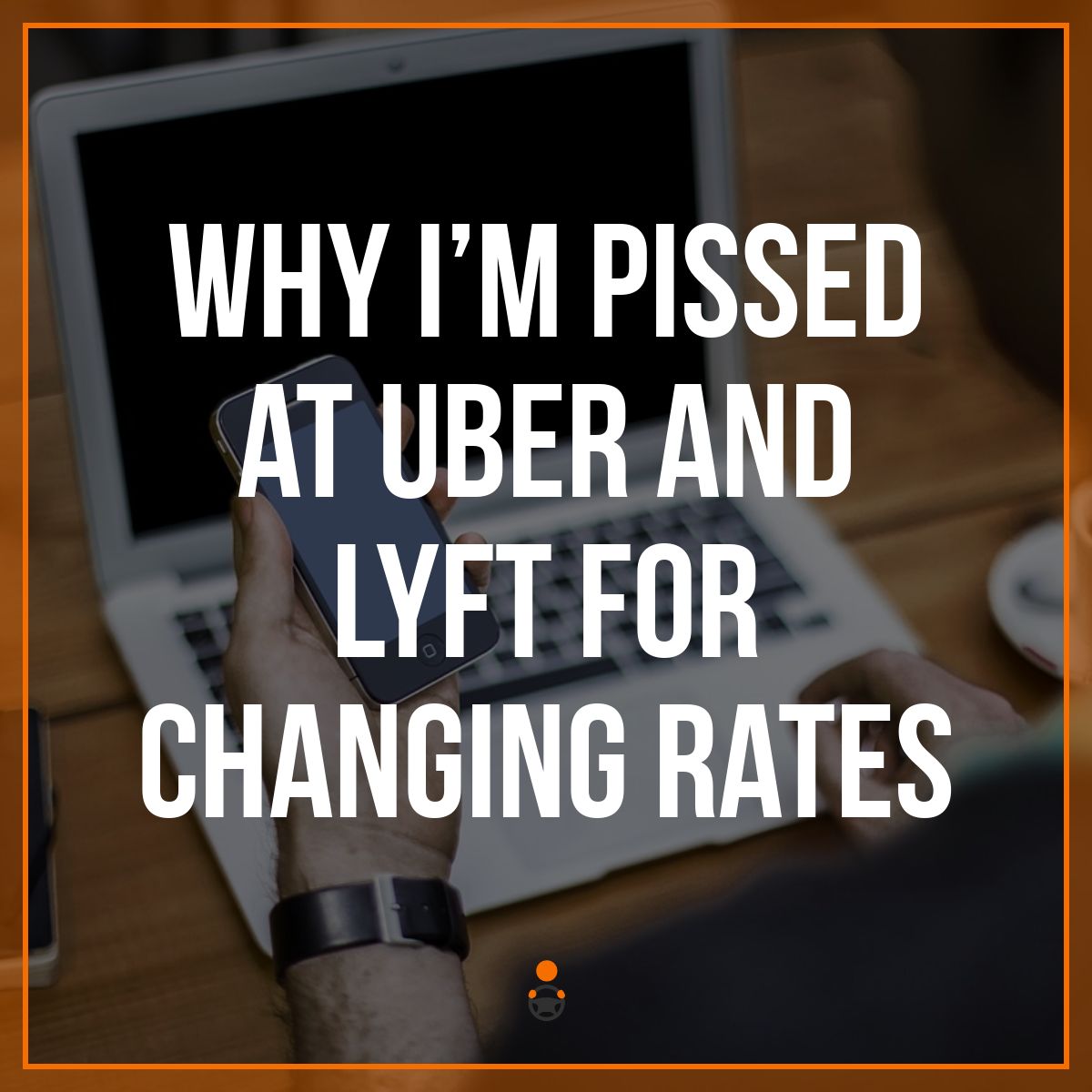
The Rate-Restructuring Announcements
Uber sent me an email on November 29th. It looked like this:
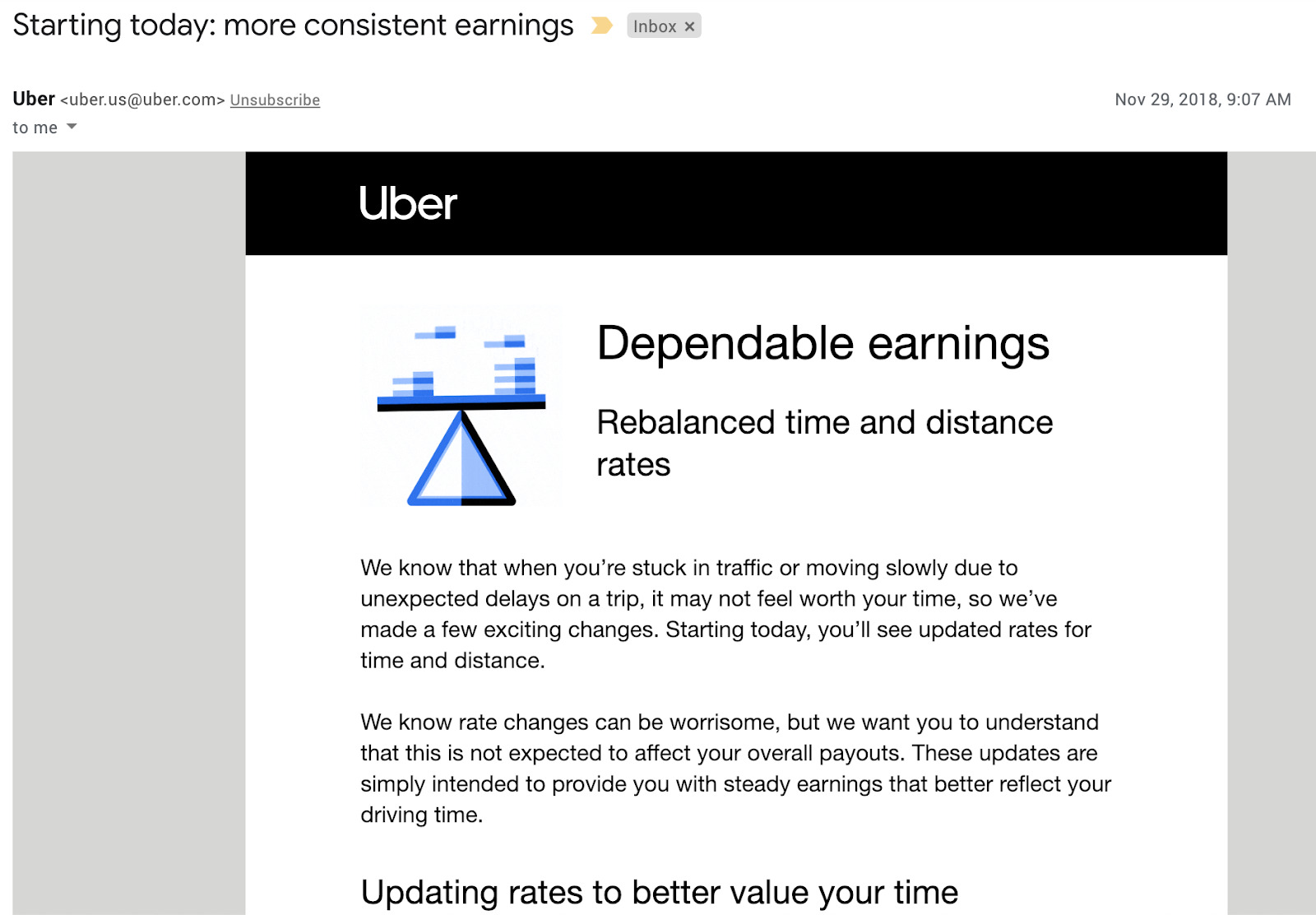
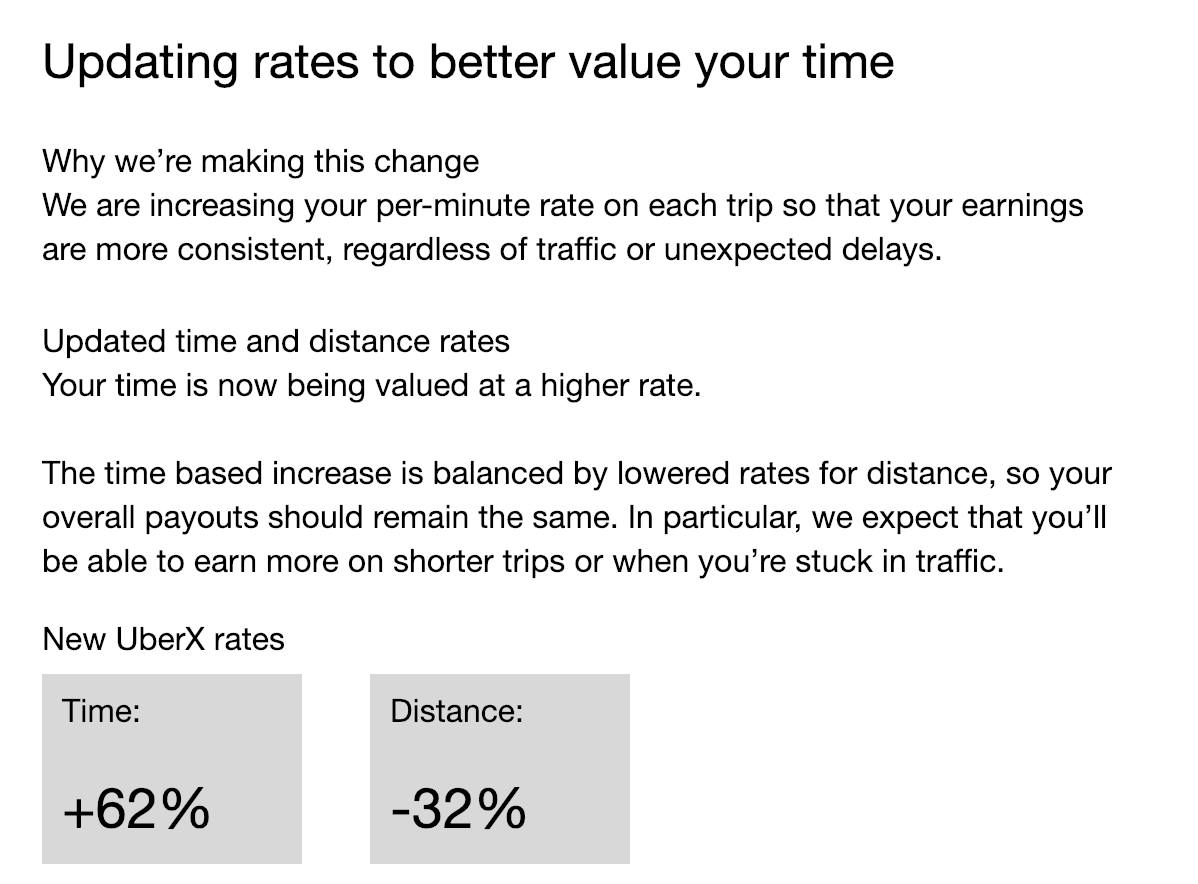
I went to the website and made of note of this question and answer:
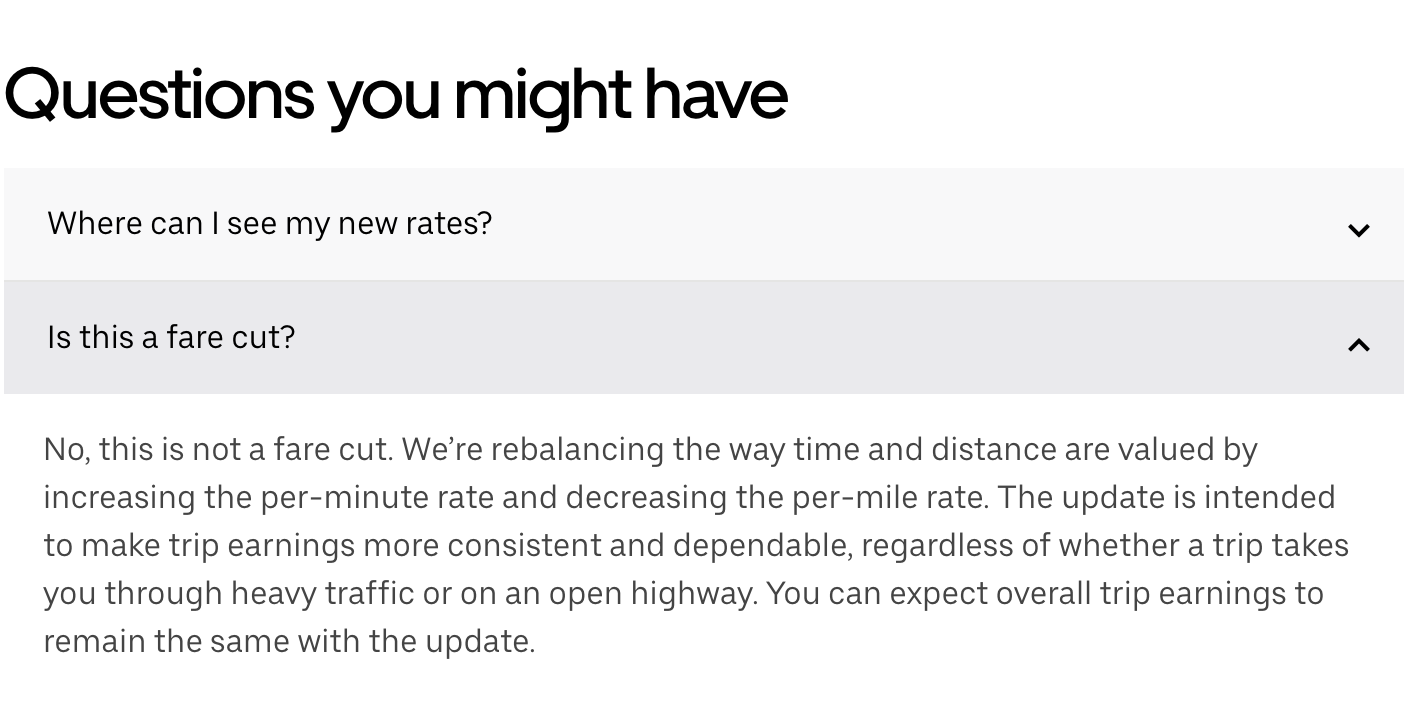
At this point, I thought, “Hmmm, another Uber ploy to pay drivers less.” Since I have been driving almost exclusively for Lyft, I felt reaffirmed in my decision to drive for Lyft, the company that really cares about the drivers and would never pull these shenanigans.
How wrong I was! Just a few weeks later, I found this in my Lyft app.
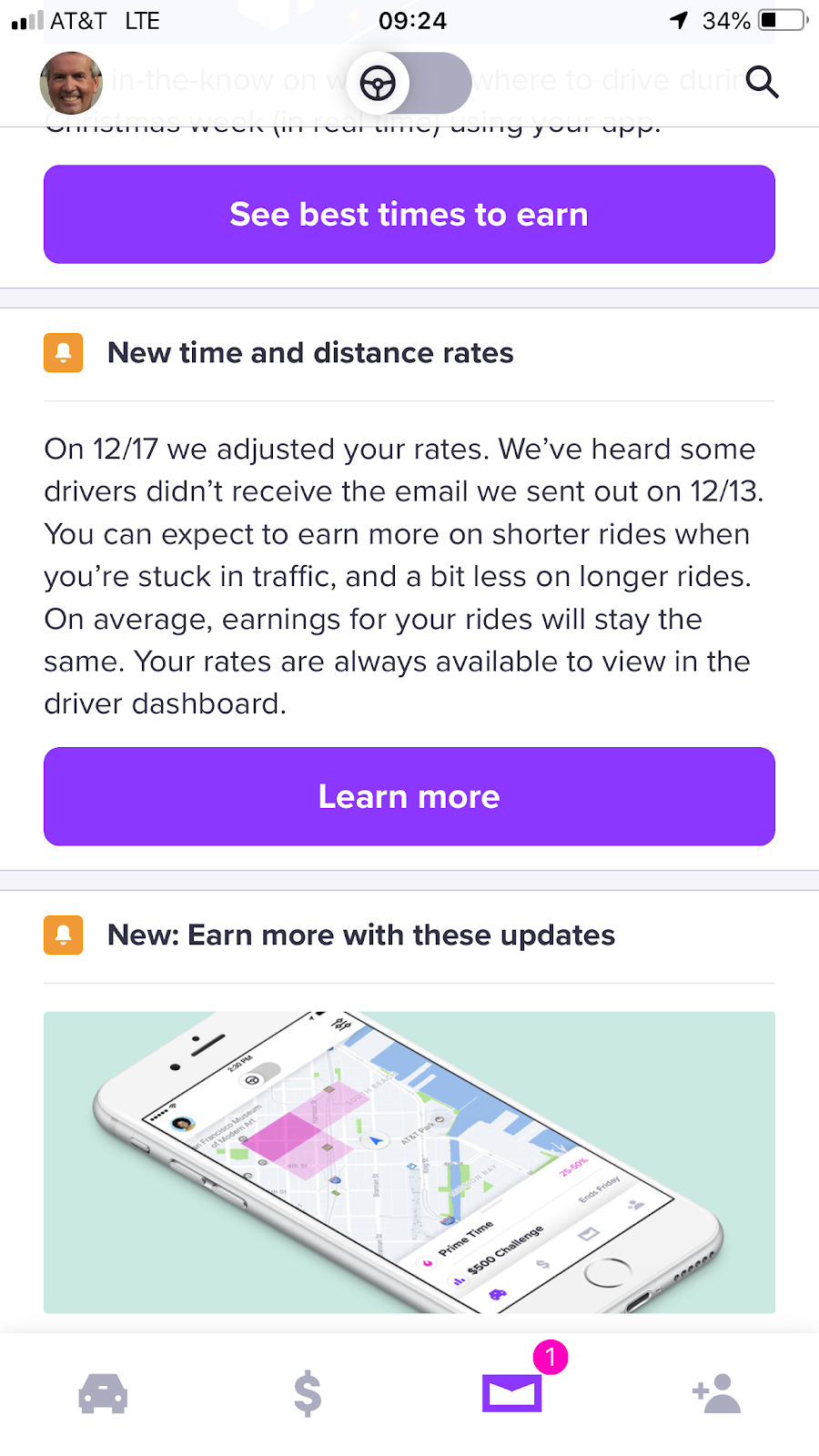
Lyft did not even send me an email. Instead, I got this afterthought notification in my Lyft app. “Oh, by the way, in case you missed it (like it is no big deal).” As they say, this is when stuff got real.
Don’t either of these companies recognize the optics of this announcement? Is the money, we assume Uber and Lyft are making from this rate restructuring, worth the negative press and driver vitriol?
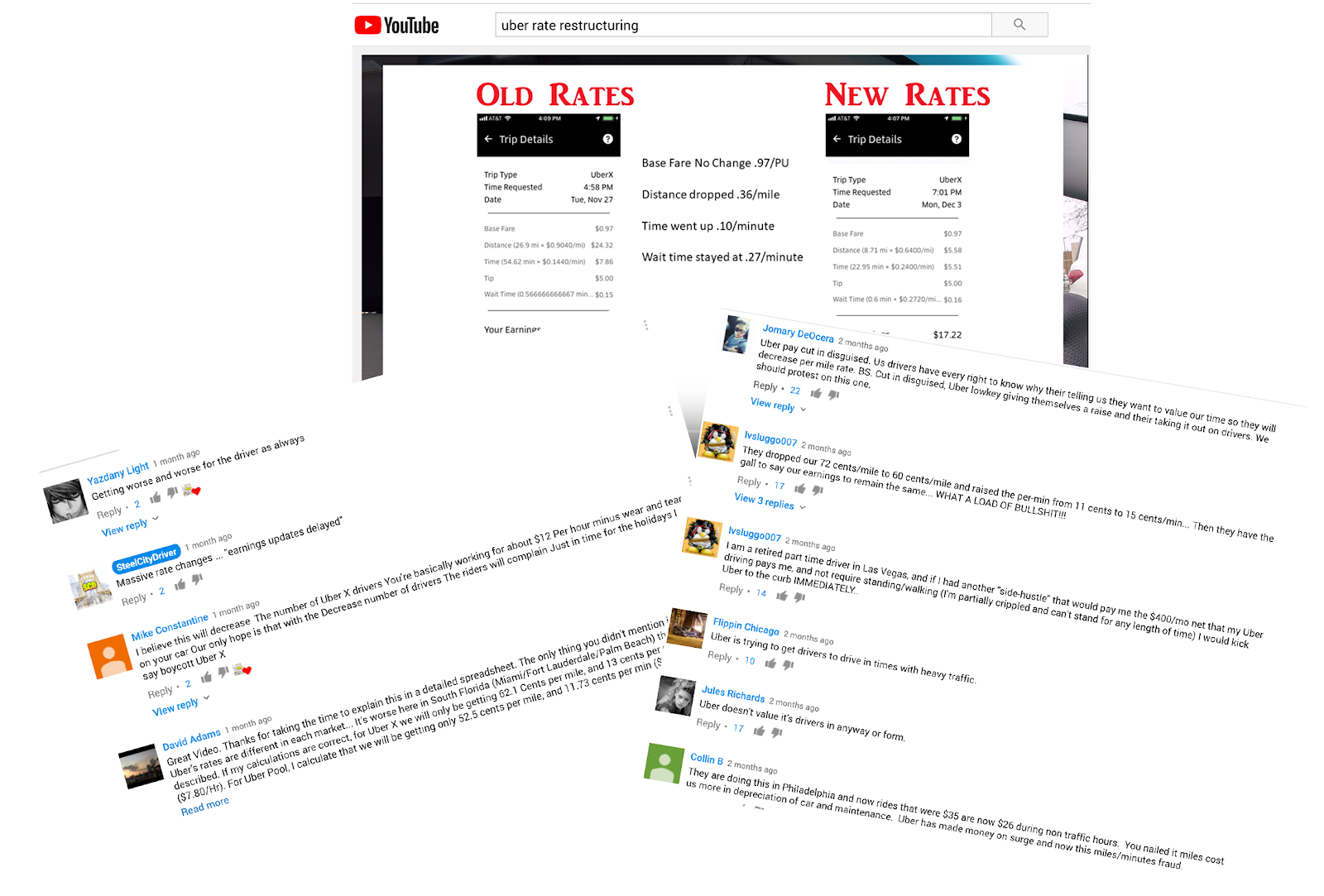
How do drivers feel about these announcements? We don’t like it. We don’t like our per mile rate being decimated. Uber and Lyft state we will earn “a bit less” on long rides. Let’s see how that really looks.
Restructuring One Week of Driving – The Real Results
I truly needed to dive into the numbers and assess the situation. I took a strong week driving for Lyft on September 17th to 23rd. I completed 165 rides and earned over $2,200 including bonuses, tips, cancel fees and bridge tolls. In order to see the impact of the rate restructuring, I took all the rides and ran them on a spreadsheet, old rates versus the new rates. Surprisingly, the numbers were not as bad as I had anticipated.
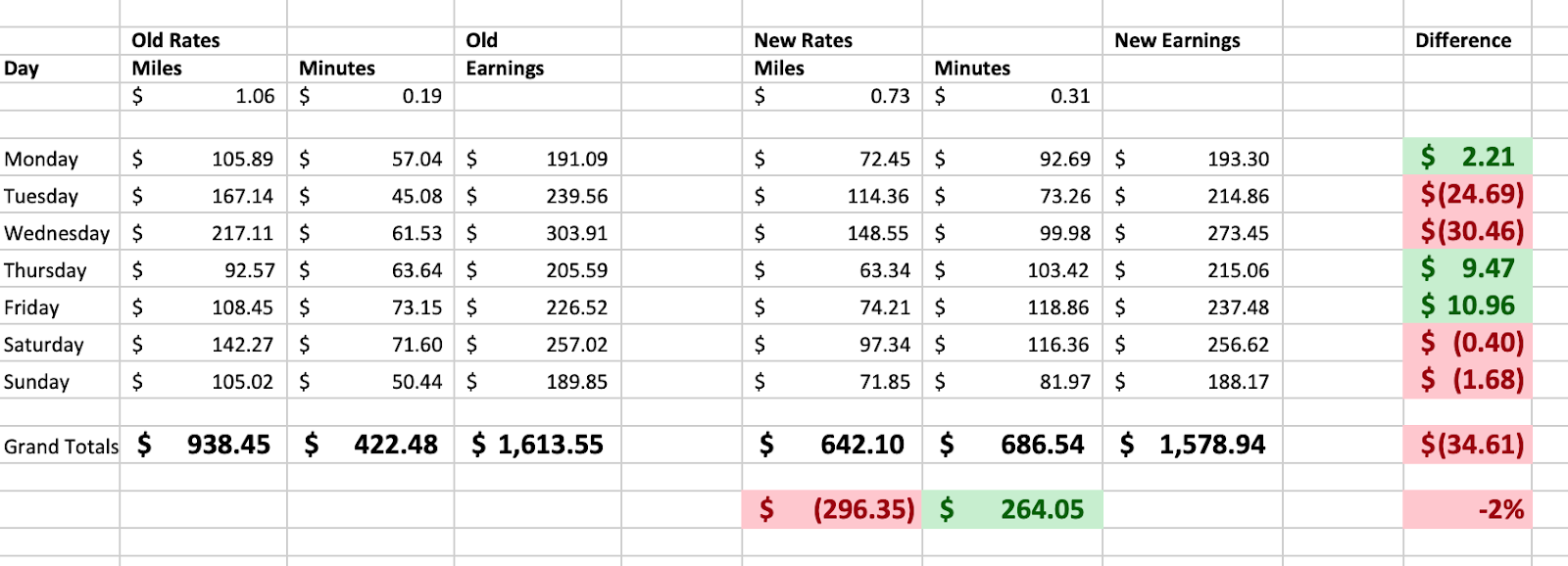
I would have earned $34 dollars less, or 2% less on my driving revenue, on this particular week. It is not as much as I thought it would be, but it is still less than I was making before this announcement.
While much of the online discussion has been about the rate reduction in miles, little value has been given to the increase in minutes. As you can see, I lost $296 in mileage, but I earned an additional $264 in minutes. Regardless, I am losing money. It is not a wash.
“On average, earnings for your rides will stay the same.” – FALSE
More Data That Says I’m Right
Dave in Boston reached out to RSG on Twitter to share what he found regarding Lyft’s rate changes, and you can take a look at his spreadsheet here.

Basically, Dave found that he made $4 less with the new rates versus the old rates in his first 2 days and $13 less overall in his first week. As an interesting note, Dave said he was not notified of the rate changes either.
Who This Helps and Who This Hurts
Drivers who sit in traffic should love this. Drivers who work to get long rides will lose money. If you are a smart driver, you realize that driving at 70 miles per hour on the freeway with a passenger in your car is the best opportunity to maximize earnings. So smart drivers were hurt the most by this change.
There are only so many hours per day, and the goal, the only way to increase revenue, is to drive as many miles as possible. Now, after this restructuring, those miles are worth less. That is the simple truth. We cannot work more minutes into an hour. There are only 60. This rate change hurts the full-time drivers who look for ways to make this driving opportunity a lucrative position with maximum flexibility.
The incentive to get creative to maximize revenue is now diminished. Even if this opportunity is only diminished by $34 per week, it is the momentum and direction of this change that is disturbing. All of this brings us back to the question of Why?
Driver Backlash
Uber and Lyft could have earned drivers’ trust by offering a coinciding guarantee that earnings will not go down. For example, in my week above, I would earn a bonus of $34 to square out the week. However, Uber and Lyft did not do that.
Instead, they appear to be playing another game, another false promise, which drivers do not trust now and will trust even less in the future. Now that we see the results, which for me at least are lower earnings, we are even more distrustful. As the old saying goes:
“Fool me once, shame on you. Fool me twice, shame on me!”
Bad Timing
Both Uber and Lyft had announced improvements with Uber Pro and Lyft’s 15 updates, all nice offerings made to improve a driver’s experience on the road. However, most drivers have not seen the majority of those benefits.
Further, the one thing that trumps all improvements is our earnings potential, our revenue, the money we work hard to earn to support our families, and in my case, send a daughter to college. Real people, real drivers, are working. We are not pieces on a game board. We need to earn real money.
For the majority of us, this is not a game. We don’t have the luxury of sitting behind a computer screen conspiring a radical plan to increase corporate revenue before a possible IPO.
The Corporate Meeting – Greed Is Good
Exec #1: Hey John, I came up with a brilliant way to increase our revenue.
Exec #2: Cool, tell me about it.
Exec #1: So, we increase the per minute rate for drivers, and at the same time, decrease the per mile rate.
Exec #2: Won’t the driver make less money and leave to drive for a competitor?
Exec #1: That is the best part. First, we tell the drivers the changes won’t impact their overall revenue. We will say “On average, your revenue will stay the same.”
Exec #2: I don’t know. I still think drivers will leave for the competition.
Exec #1: Trust me, our competition will do the exact same thing. They want to make more money too.
Exec #2: Let’s do it
Summary
I don’t know if this is how it all went down. It doesn’t really matter. At the end of the day, this rate restructuring is just another blow to the revenue stream for drivers. It is not a huge blow. It just sucks!
But worse for Uber and Lyft, whatever goodwill they earned with their recent driver experience improvements have been dashed to the ground. We drivers are quick to forget the good stuff when these companies mess around with our money.
As many people have already said, if the money is the same, then why do it? What does “more consistent earnings” even mean and where are the drivers who have ever asked for it? Please!
The sad but sobering fact is that we drivers are, in fact, pieces on a game board. Realize your place and accept your place, and you will be fine. You can choose to stay or choose to go. It is not really surprising that driver turnover is so high for Uber and Lyft, now is it?
Readers, have you done the math on your driver pay since the rate restructuring? How has it changed?
-Jay @ RSG




